New BGS datasets for coastal management, planning and adaptation in the face of climate change
BGS GeoCoast is a package of geospatial datasets designed to provide information on the geological conditions and constraints around the coastline of Britain.
29/03/2022 By BGS Press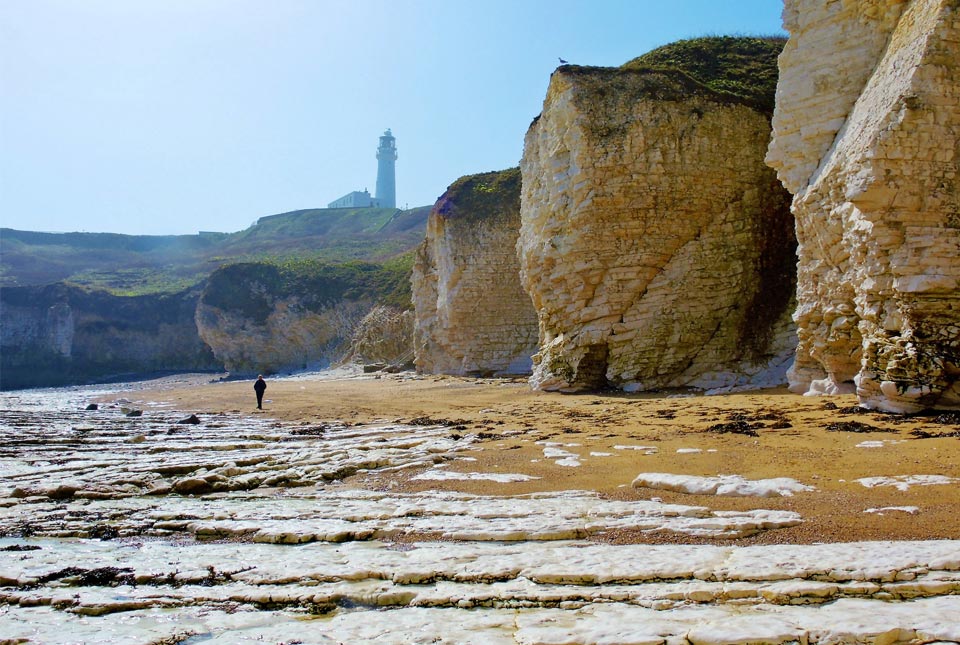
BGS GeoCoast is a new data product from BGS that will enable local authorities and coastal practitioners to make improved decisions about coastal hazards and help build resilience to increasing changes facing Britain’s coastlines.
A package of geospatial datasets designed to provide information on the geological conditions and constraints around the coastline of Britain, it translates key geological data into suitable information to support the decision-making process. The new data product has been designed to assist future planning, with resilience considerations based on the natural geological characteristics of the coastal region.
Each year, Britain’s coastline shoulders some of the largest tides in the world. Some areas are highly vulnerable to flooding, like Spurn Point in East Yorkshire where sea level rise is predicted to cut off Spurn Head by 2050 (based on UKCP18 climate change projections).
Of the 17 819 km of coastline around mainland Britain, some 15 per cent is potentially highly vulnerable to erosion. As climate change triggers sea-level rise and more extreme weather events, the effects on many of our coastlines, such as erosion, subsidence and landslides, are likely to become more frequent, scientists warn.


Coastal resilience is a key issue for our island nation and especially for those who live and work around our coastline.
BGS GeoCoast brings together a range of data for coastal practitioners, local authorities and asset owners who want to underpin their decision making and planning with authoritative data.
Users can access information on the morphology, behaviour and vulnerability of the coastline, underpinned by its geology and its coastal context, accounting for factors such as the shape of the coastline and its orientation.
Such information is essential for good coastal management and improving our understanding of coastal environments and their properties, enabling communities to better respond and build resilience to our changing coastline in the wake of more extreme weather events.
Increasing numbers of people are living in and using our coastal areas, where hazards such as flooding and erosion will continue to threaten our environment, infrastructure and livelihoods.
Adaptative strategies and effective planning decisions cannot be adopted without a thorough assessment of the area and an understanding of its unique coastal vulnerabilities. The availability and use of coastal data, including an assessment of climate change-related flood impact, are central to this evaluation.
The release of BGS GeoCoast will be a welcome step in arming practitioners with information and resources to understand more about which coastline is potentially vulnerable and make informed decisions about how we can adapt coastal areas to be more resilient.
Unlike other coastal datasets, BGS GeoCoast offers a consistent, national assessment that includes detailed analysis of the variation and erosion potential around the coast, especially in complex cliffs.
Katy Lee, BGS Digital Product Lead.
In areas vulnerable to coastal change, such as Holkham in Norfolk, tidal surges will particularly affect sensitive habitats, properties and businesses more frequently in the future. Other areas include Tillingham Marshes in Essex, Studland Bay in Dorset and Dungeness in Kent.
Human influence may come and go but the underlying, fundamental natural deposits — the geology — are always an important factor to consider. A sea wall might be protecting weak sediments currently, but if that sea wall is breached or no longer maintained, we need to be aware of potential vulnerabilities in order to adapt the area to be more resilient.
Katy Lee, BGS Digital Product Lead.
Combining geological knowledge and coastal expertise with a track record of delivering data services to stakeholders for over 20 years, BGS GeoCoast is available in two easy-to-use packages, GeoCoast Premium and GeoCoast Open.
GeoCoast data product launch event
Coastal practitioners, local authorities and anyone interested in finding out more about GeoCoast are invited to attend a free, online webinar being hosted by BGS on 28 April 2022 at 13.00. Those wishing to attend should register online via our event page.
GeoCoast Premium
Offering the most detailed and technical suite of information, GeoCoast Premium provides a range of geological and geomorphological properties that influence coastal vulnerability. It is best suited to local authorities, coastal practitioners and asset owners who want essential and tailored baseline geological information to feed into coastal vulnerability analyses and assessments at the local level.
The datasets are compatible with shoreline management plan areas and can be integrated with other models and datasets to ascertain a more extensive vulnerability assessment considering broader ecological, morphological and societal impacts.
GeoCoast Open
A suite of GeoCoast Open datasets are also available for anyone with an interest in coastal change, offering access to archive photographs, cross-sections and diagrams from BGS maps, memoirs and publications, as well as a combined coastal domains summary and an analysis of the key variables and data combinations available within the BGS GeoCoast product.
Available for interview:
Katy Lee: digital lead, BGS
Patrick Gray: head of digital products, BGS
Media contact: Hannah Pole, BGS Press Office: hapo@bgs.ac.uk | 07565 297 132
Notes to editors:
- BGS GeoCoast Premium provides a range of geological and geomorphological properties that influence coastal vulnerability. They are provided as attributed 50 m grid cells around the coastline of Great Britain. The data has been developed from BGS databases, datasets, regional expertise and additional analytics to compile the essential baseline geo-information necessary to feed into coastal vulnerability analyses and assessments for resilience and adaptation. It consists of:
-
- coast grid dataset
- foreshore (type; properties; spatial area)
- backshore (type; properties; spatial area)
- coastal erosion susceptibility overview (vertical cliff layers; properties)
- cliff profiling (slope angle; distance; cliff height)
- potential inundation zones under climate change scenarios (future sea level rise forecast for 2050, 2080 and 2100)
- coastal subsidence potential (satellite measurements and lithology type)
- groundwater flooding and coastal flood dataset (combined hazards indicating exacerbated impact)
- coastal erosion susceptibility dataset (a full lithology by lithology detailed attributes)
- coast grid dataset
- GeoCoast Open provides a range of historic images and diagrams extracted from BGS archives, memoirs and other publications, which can provide a reference for coastal change, plus a detailed suit of statistical data based on the underlying datasets in GeoClimate Premium, for example percentage of county at threat from inundation, percentage of county coastline with high susceptibility to erosion. In addition, there is a tool to compare and/or share best practice at a regional scale and streamline the consideration of multiple underlying datasets through a simple, high-level scheme presented as domains. GeoCoast Openconsists of:
- historic data/images (point data)
- regional statistics (shapefiles)
- coastal domains for erosion and morphology
- Met Office UK Climate Projections provide an up-to-date assessment of how the UK climate may change in the future. They are a climate analysis tool that forms part of the Met Office Hadley Centre Climate Programme. The UKCP18 project uses cutting-edge climate science to provide updated observations and climate change projections out to 2100 in the UK and globally.
- Climate projections based on UKCP18 predict that sea levels will continue to rise, wave heights will increase and storms might become more regular events by 2080 and 2100.
- Impacts for low-lying areas or eroding cliffs are expected to be widespread according to geologists, which are vulnerable to sea flooding, wave action and in-cliff groundwater. Dune ecology, infrastructure, agriculture, homes and businesses may be affected. Groundwater levels at the coast are also likely to rise, affecting groundwater salinity which can add pressure on water resources. Shoreline defences and their management are also under threat in many areas.
Relative topics
You may also be interested in:
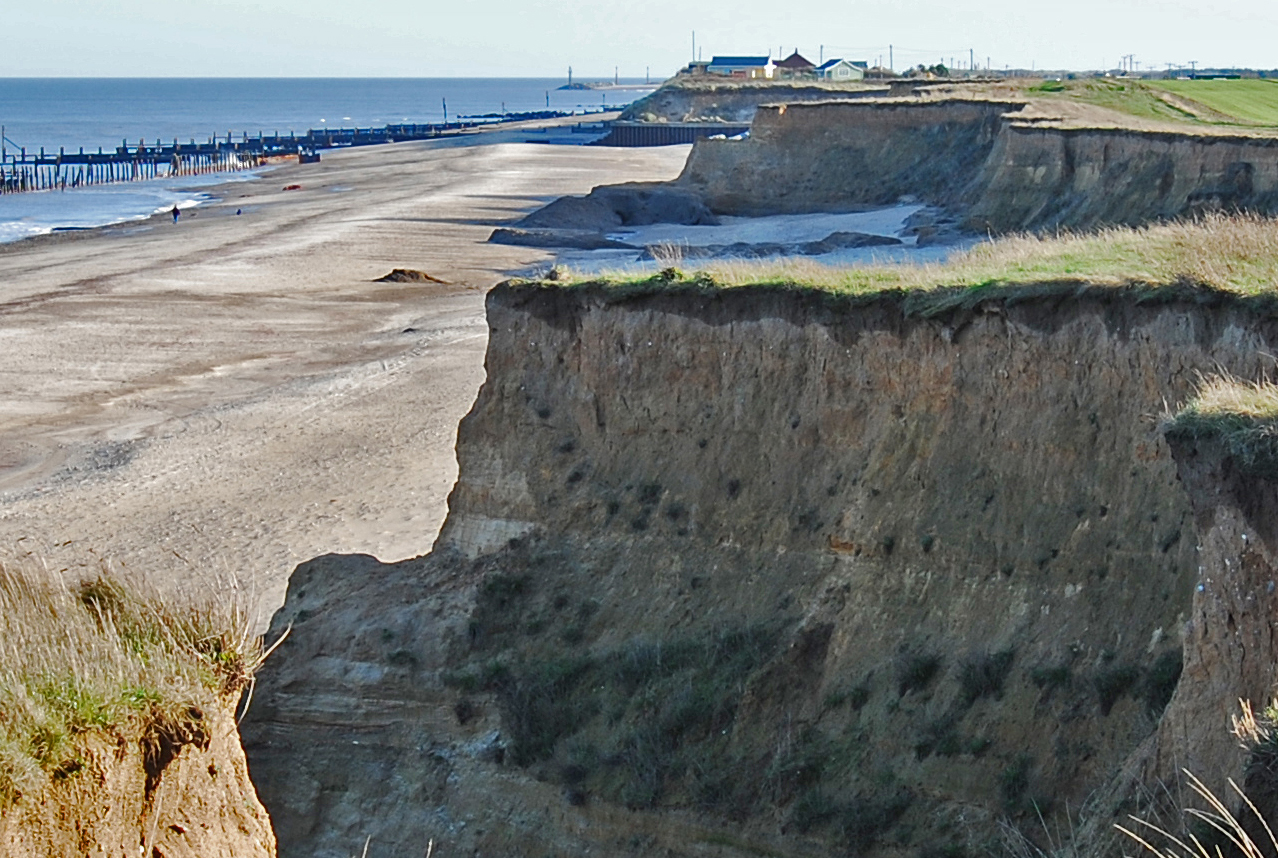
Coasts and estuaries geohazards
Providing independent and expert geoscientific tools and advice to assess different adaptation options to coastal flooding and erosion.
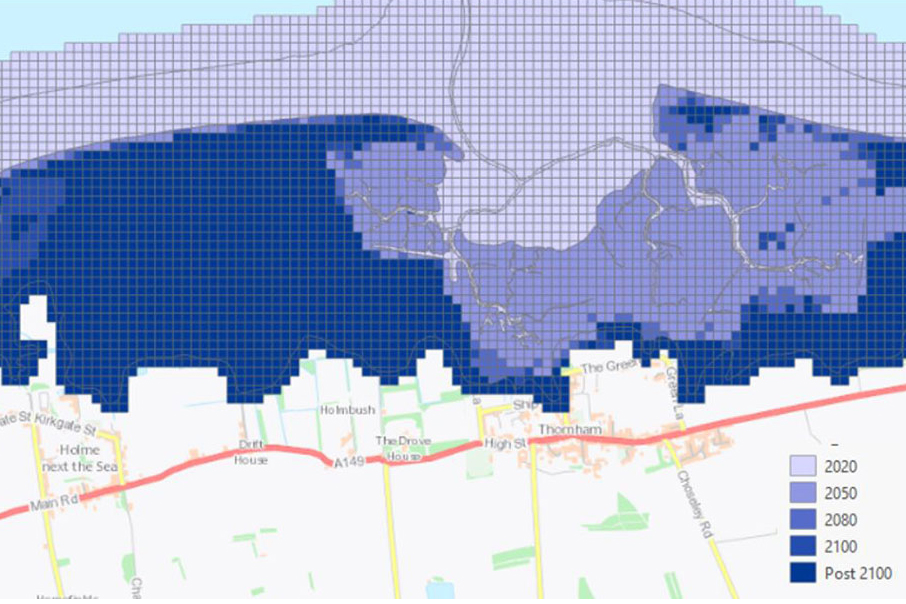
GeoCoast Premium
GeoCoast is an integrated GIS package of datasets designed to inform and support coastal management and adaptation.
Latest news
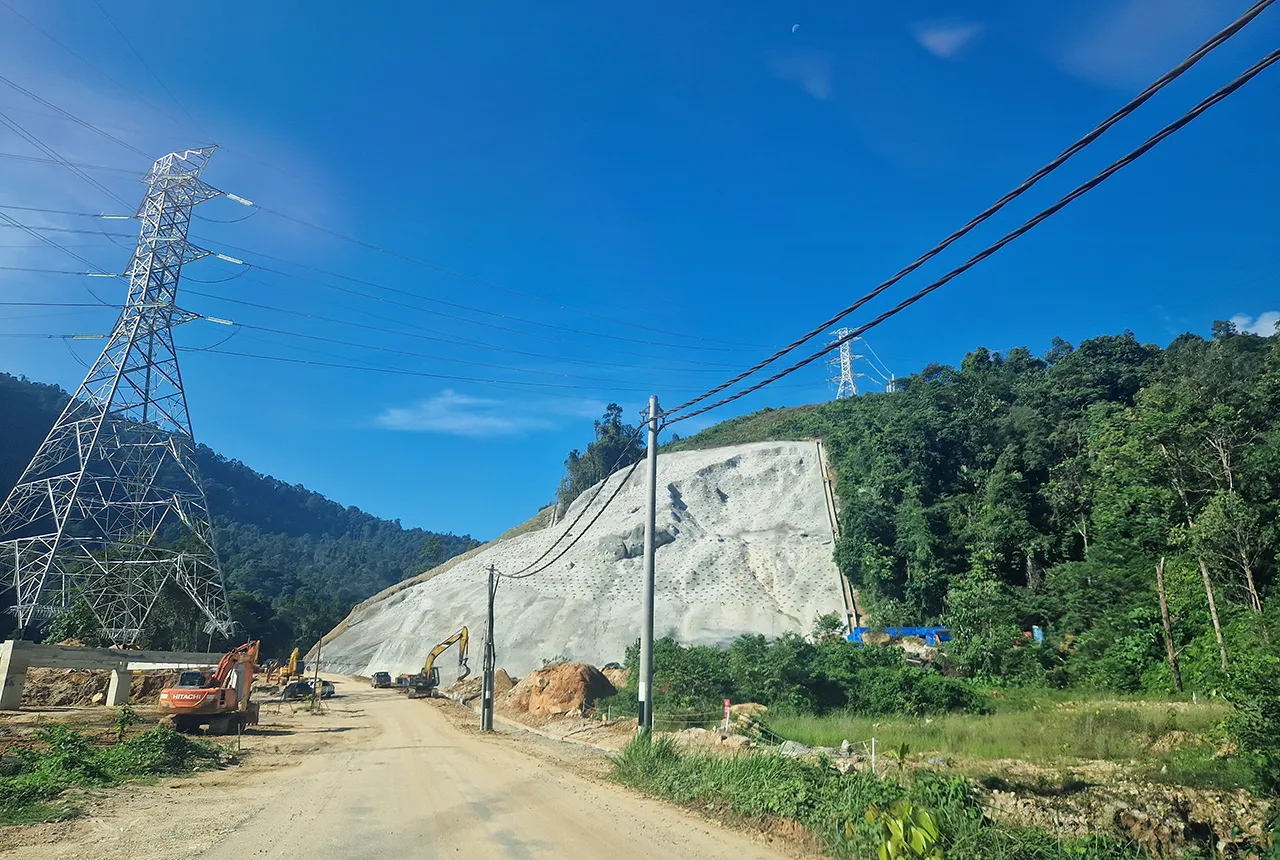
BGS awarded funding to support Malaysia’s climate resilience plan
17/12/2025
The project, funded by the Foreign, Commonwealth & Development Office, will focus on minimising economic and social impacts from rainfall-induced landslides.
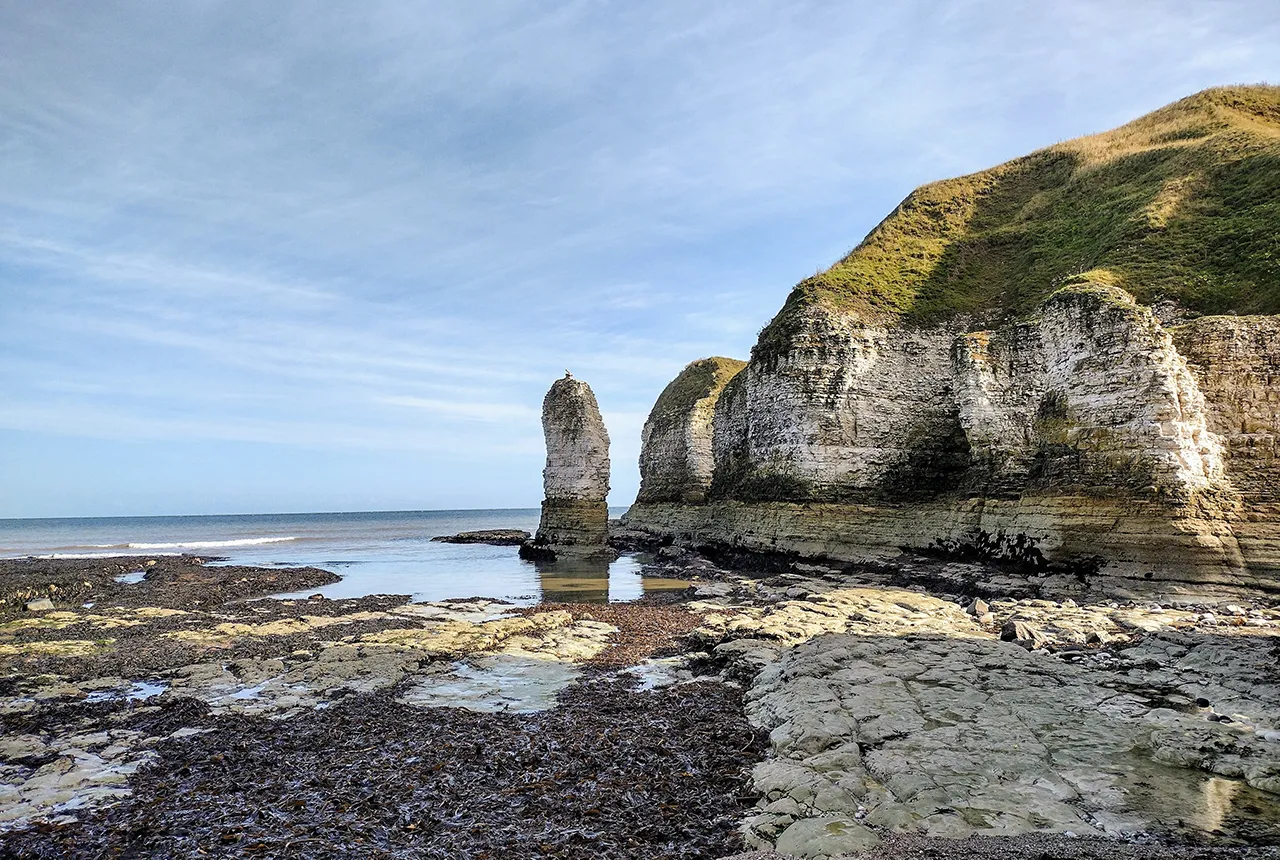
New geological maps of the Yorkshire Wolds to better inform groundwater management and policy decisions
17/12/2025
The new mapping provides crucial data on localised geological issues that may assist in protecting water supplies.
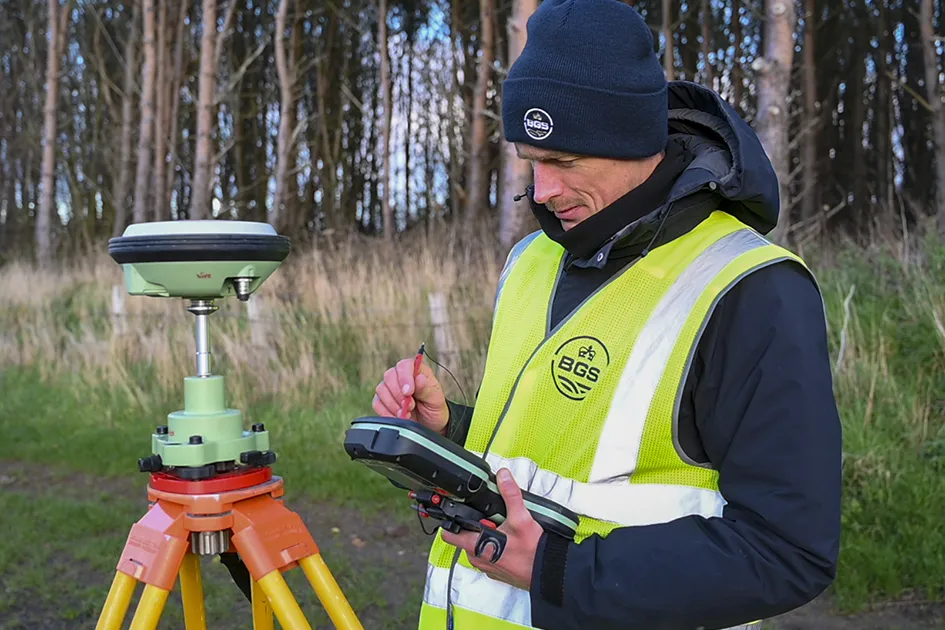
‘Three norths’ set to leave England and not return for hundreds of years
12/12/2025
The historic alignment of true, magnetic, and grid north is set to leave England, three years after they combined in the country for the first time since records began.

BGS agrees to establish collaboration framework with Ukrainian government
11/12/2025
The partnership will focus on joint research and data exchange opportunities with Ukrainian colleagues.

Making research matter: BGS joins leading research organisations in new national initiative
10/12/2025
A new alliance of 35 organisations has been formed that is dedicated to advancing science for the benefit of people, communities, the economy and national priorities.

New 3D model to help mitigate groundwater flooding
08/12/2025
BGS has released a 3D geological model of Gateshead to enhance understanding of groundwater and improve the response to flooding.
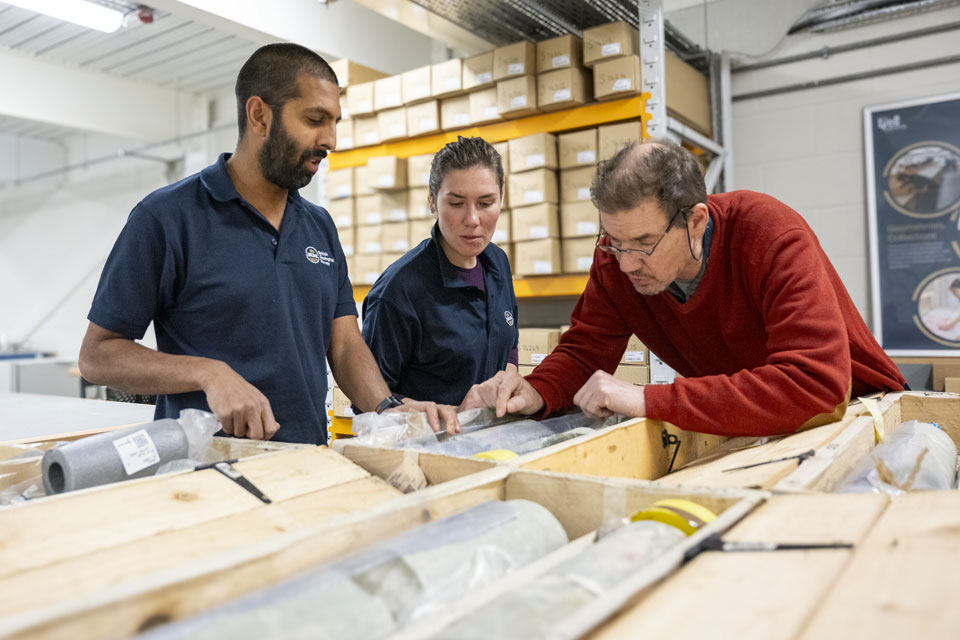
Scientists gain access to ‘once in a lifetime’ core from Great Glen Fault
01/12/2025
The geological core provides a cross-section through the UK’s largest fault zone, offering a rare insight into the formation of the Scottish Highlands.
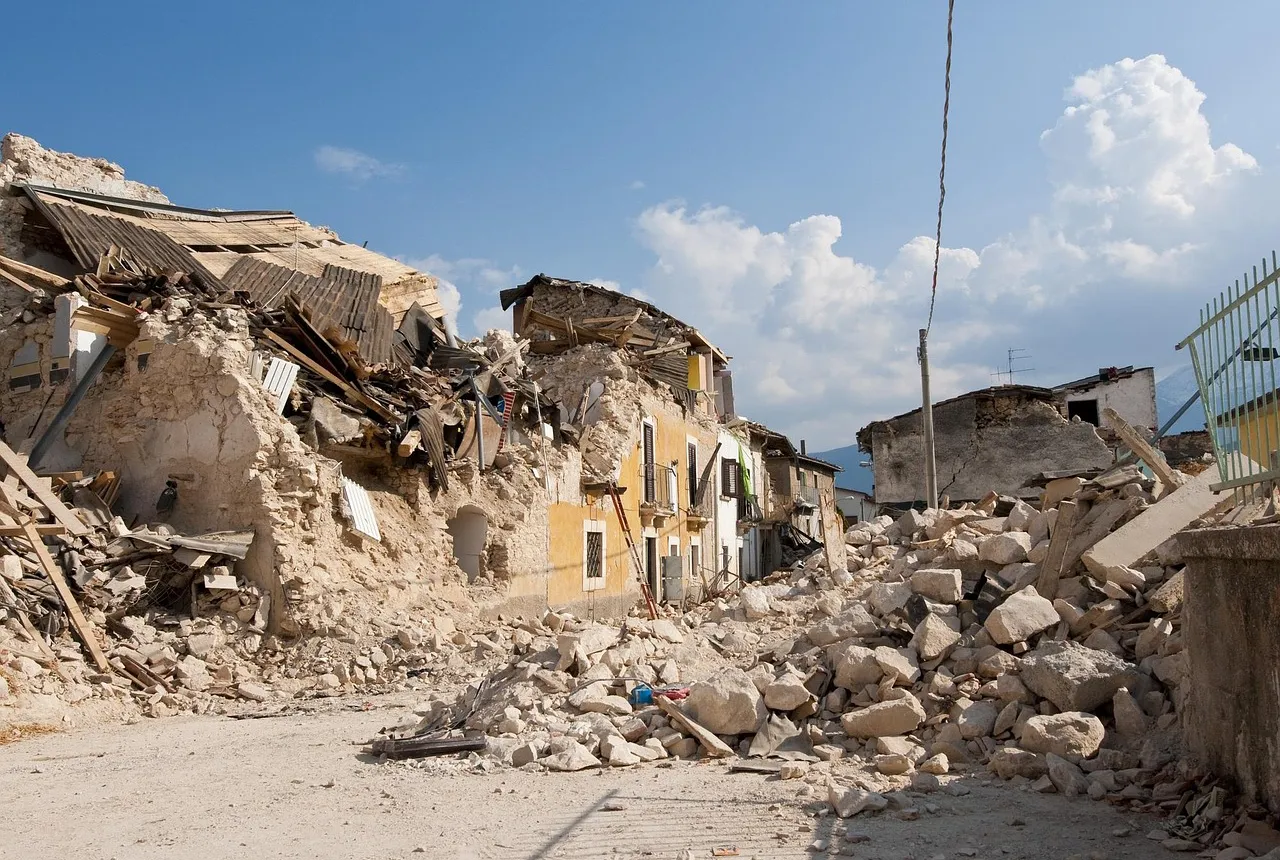
New research shows artificial intelligence earthquake tools forecast aftershock risk in seconds
25/11/2025
Researchers from BGS and the universities of Edinburgh and Padua created the forecasting tools, which were trained on real earthquakes around the world.

BGS welcomes publication of the UK Critical Minerals Strategy
23/11/2025
A clear strategic vision for the UK is crucial to secure the country’s long-term critical mineral supply chains and drive forward the Government’s economic growth agenda.
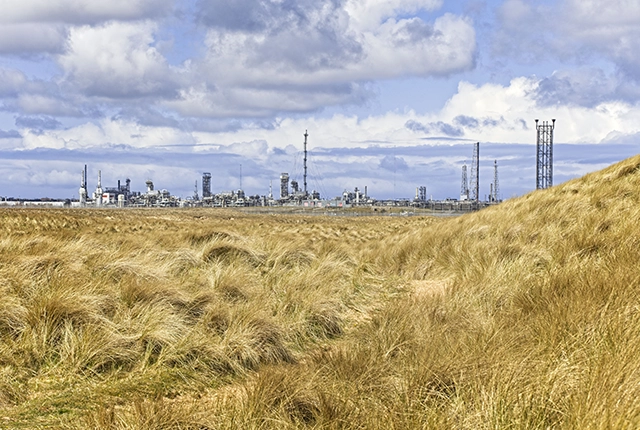
New funding awarded for UK geological storage research
21/11/2025
A project that aims to investigate the UK’s subsurface resource to support net zero has been awarded funding and is due to begin its research.

UK braced for what could be the largest solar storm in over two decades
12/11/2025
Intense geomagnetic activity could disrupt technology such as communication systems, global positioning systems and satellite orbits.
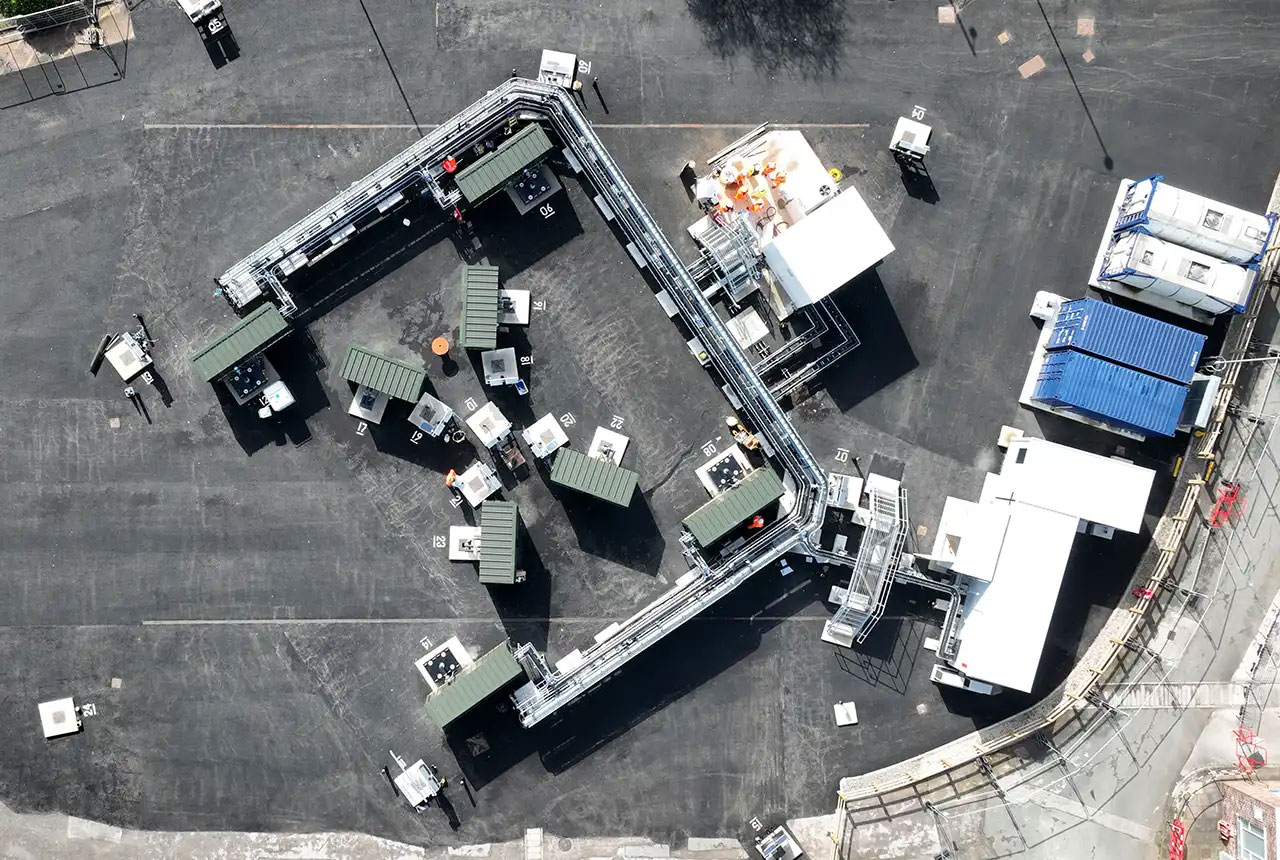
First distributed acoustic sensing survey completed at UK Geoenergy Observatory
12/11/2025
New research at the Cheshire Observatory has shown the potential for mapping thermal changes in the subsurface using sound waves.



